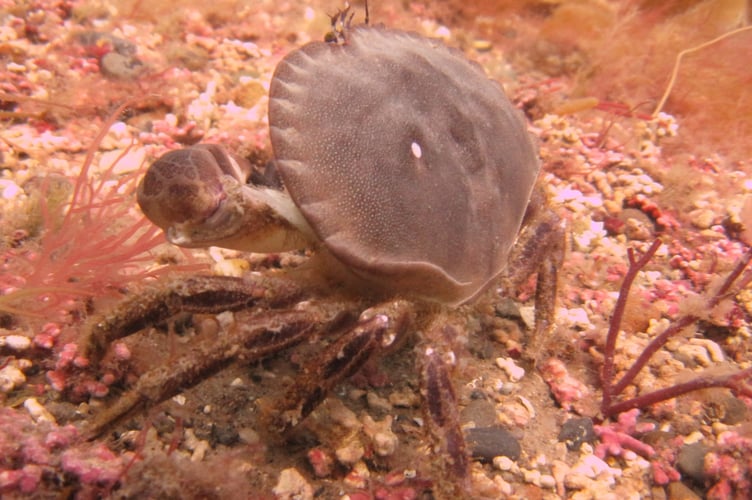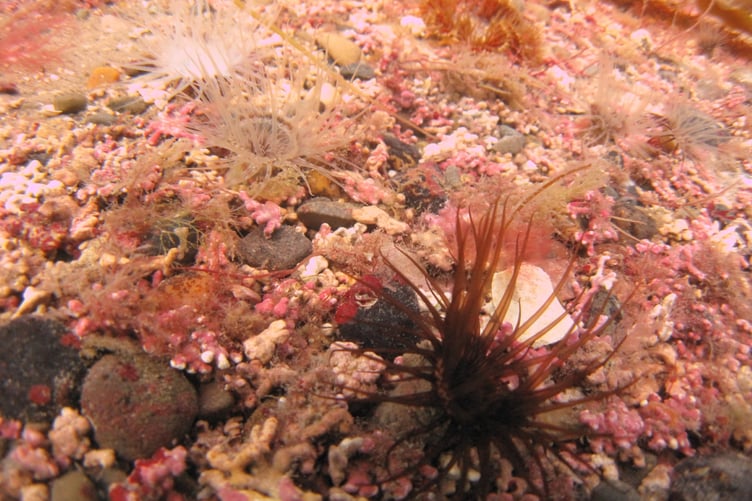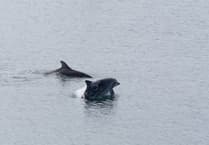Last month we visited the island’s kelp forests creating lush, waving, three-dimensional seaweed habitats.
But there are other types of algae in the intertidal and subtidal areas that are quite different, just as pretty and also ecologically important – the pink coralline algae.
The familiar intertidal and kelp seaweeds belong to the green algae and brown algae, but there is another group called red algae, which are numerous but a little less obvious.
Part of the reason for this lies in those colour-based group names; green, brown and red, with the colours related to the different photosynthetic pigments used convert light into energy.
Green algae use essentially the same pigments as terrestrial plants and absorb similar wavelengths of light. As such they are much more common in wet terrestrial or freshwater habitats and found closest to the shore.
The brown algae, which are mostly marine, contain a different pigment allowing them to live deeper as they can absorb deeper-water penetrating wavelengths of light from the surface. Species include large kelps that form ‘forests’, with the floatation adaptions enabling them to hold better light-absorbing positions closer to the surface - hence the impression of being tree-like.
However, red algae have a pigment that reflects red but actually absorbs blue wavelengths of light which penetrate deepest. Red algae can therefore live at greater depths – up to hundreds of metres - and more often beyond casual human observation. They are also less obvious because they are smaller and sometimes just decidedly weird.
Let’s focus on two types of local unusual red algae – both of which look more like coral than seaweed. However, the only similarities are that they both deposit calcium carbonate and form hard, branching or plate-like external skeletons providing both support and durability. This means they grow very slowly.

The first type of coralline red algae is a widespread, offshore species group/habitat called maerl and often consists of two different species called phymatolithon calcareum and lithothamnion coralloides.
When alive it’s bright pink but bleaches to white when dead. In some areas around the island it can form dense beds of branching nodules, with the living algae on the surface to absorb light and the old, dead pieces underneath. The pink colouration of live maerl is so conspicuous that the whole seabed gives the impression of being bright pink.
Importantly, whether live or dead, the hard branching structure provides lots of spaces and water flow, so it’s an ideal habitat for small and vulnerable life stages of different animals.
As photosynthesising algae, they also give off oxygen providing a pleasant environment for various species. The link with juvenile scallops is well known and small queenies actively move onto live maerl.
It may seem surprising that this important marine habitat has been dredged up and used as agricultural fertiliser for many decades, which has resulted in its general decline around many European coasts.
Fortunately, this practice is being reduced and does not occur around the Isle of Man, with most of our inshore maerl beds protected within Marine Nature Reserves, such as Ramsey Bay, Laxey Bay and Langness MNRs. However, with growth rates of only millimetres per year, recovery will take many decades.
In the next article we’ll find out about another Manx coralline red algae, perhaps even stranger than maerl.




.jpeg?width=209&height=140&crop=209:145,smart&quality=75)
Comments
This article has no comments yet. Be the first to leave a comment.